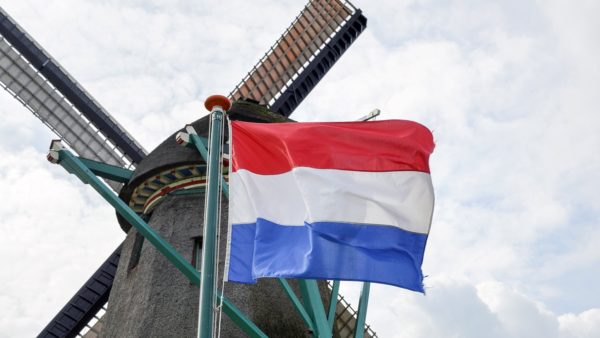

Money managers could capitalize on the proposed Dutch pension legislation that is expected to move all pension fund assets and liabilities to defined contribution plans by 2020, industry sources said.The newly elected Dutch government, in a paper published Oct. 10, laid out reforms that would move pension assets to personal accounts from legacy defined benefit arrangements. That effort is aimed at making the €1.1 trillion market less fragmented as it is now among defined benefit, defined contribution and hybrid plans.Remaining key questions, including how existing defined benefit liabilities would be addressed, are expected to be negotiated with social partners — pension funds, corporations and unions — early next year, the paper said.Related CoverageKLM, pilots union agree on move to DC plan Netherlands announces pension reform that would move country to a DC systemThe new structure, if enacted, has the potential to change the investment patterns of Dutch investors by encouraging greater exposure to more risky investments, sources said. In turn, that could produce more opportunities for money managers.According to Mercer‘s 2016 European asset allocation survey, Dutch plans had 29% of assets in equity, 57% in bonds, 4% in real estate and 10% in other asset classes.Some industry sources added that equity managers could end up winning more business because the incoming changes will introduce lifecycle funds, which automatically adjust risk tolerance during a participant’s life, on a larger scale.Rene van de Kieft, CEO of money manager MN in The Hague, Netherlands, said in a telephone interview that retirement plans will move to a lifecycle fund construct, depending on the final outcomes of the pension reform.“Instead of choosing traditional allocation for the whole defined benefit fund, they will have the possibility to use investment funds for individual accounts,” he said.Gerard Riemen, director at Pensioenfederatie, the Dutch pension funds federation in The Hague, in a separate interview, added: “An individual account gives people a choice of investment policy.”Maureen Schlejen, head of institutional relations, Netherlands, at NN Investment Partners in The Hague, said in a separate interview that a move to lifecycle funds will enable plan participants to remain invested in equity for longer. And retirement plans currently offering a mix of DB and DC could also benefit. “Plans will move assets out of defaults into tailored solutions,” Ms. Schlejen said.More flexibilityThe Dutch government also plans to introduce more flexibility for plan participants in the post-retirement space to ensure risk sharing and intergenerational fairness. Some of the incoming proposals resemble features of new defined contribution structures in other European countries.For example, the U.K. in 2015 abolished a requirement that plan participants had to buy an annuity upon retirement. The Dutch reform will bring similar consequences, including opening up flexibility for investing during retirement.Peter Borgdorff, director of the €185 billion ($218 billion) Pensioenfonds Zorg en Welzijn, Zeist, said: “The government wants plan participants to retire with a personal pot, so everyone can see how much money has been set aside from the big pot for individual pension. That can help to strengthen trust in our pension system.“All companies and institutions active in sectors such as health and welfare must offer the same pension to their employees. One sector, one pension and one pension fund. This ensures that companies do not compete at the expense of their employees’ retirement plan,” Mr. Borgdorff added.More costs expectedBut even if the reform in the Netherlands boosts opportunities for money managers, some sources said the legislation will inevitably create additional costs for retirement funds because of the change in administrative systems it will require.“That’s a big change,” said Mr. van de Kieft at MN, which has €115 billion in assets under management. “The challenge for these pension funds is that it might have to be introduced very fast and there is a lot that’s uncertain about how it should be done.”The challenges for the funds don’t end there, sources said.Seventy percent of the nation’s retirement assets are in defined benefit arrangements, and it is uncertain how the transfer of assets (and) liabilities will look like in practice.In regard to defined benefit liabilities, “the exact meaning and impact (of the proposal) is not clear yet,” said Edwin van den Oever, managing director of LifeSight Nederland in Rotterdam, a master trust offered by Willis Towers Watson PLC.MN’s Mr. van de Kieft added: “The majority of corporate plans are not particularly in favor of (theses expected) changes, because they consider the arrangements they already have to be good. For instance, many of them don’t have shortages on their coverage ratios, they provide indexations — adjusting of retirement income payments — and they already have solutions to offer plan flexibility,” Mr. van de Kieft said. Defined benefit plans, Defined contribution plans, Europe, Equities,
more recommended stories
 Pelosi Statement on President Biden’s Historic Student Debt Relief
Pelosi Statement on President Biden’s Historic Student Debt ReliefAUGUST 24, 2022 PRESS RELEASE San.
 NY Times Reveals Racist Double-Standard in Mayra Flores Smear
NY Times Reveals Racist Double-Standard in Mayra Flores SmearByJacob Bruns July 7, 2022 NY.
 World Health Organization Issues New Guidelines On Abortion Including Ending All Time Limits Restricting Abortions
World Health Organization Issues New Guidelines On Abortion Including Ending All Time Limits Restricting AbortionsAccess to safe abortion critical for.
 Polk County First Confirmed Case Of Rabies In 2022
Polk County First Confirmed Case Of Rabies In 2022MAR 3, 2022 Media Contact: Brian Bruchey,.
 Judge Blocks Effort To Keep Cawthorn Off NC Ballots
Judge Blocks Effort To Keep Cawthorn Off NC BallotsUpdated March 4, 2022 2:00 p.m..
 Florida Legislature Passes Bill Banning Abortions After 15 Weeks
Florida Legislature Passes Bill Banning Abortions After 15 WeeksPresident Office — Press Release FOR.
